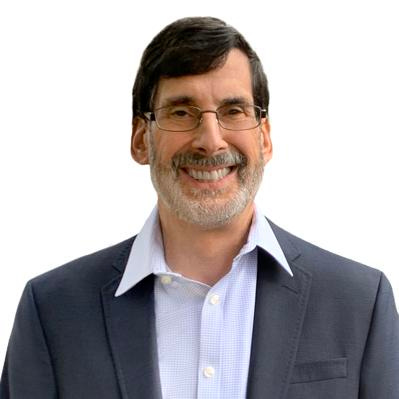Perverse incentives: The scent of money and its effects on urologists and other surgeons
Check out a new prostate study for vets on genetics and PCa
By Howard Wolinsky
Incentives, let’s call them money for simplicity sake, can have some surprising effects on doctors.
I have been preparing an article that contradicts what many of you probably believe abouts urologists being incentivized do protatectomies to make more money.
I once had an exchange with a fellow patient who argued that my dcotor was pushing surveillance in hopes of finding a cancer so he could buy a new “red sports car.” I didn’t think so. More likely he was pushing Active Surveillance because it was the right thing to do—not to trade up on his car or home.
Commercial insurers and Medicare for years have low-balled surgeon’s fees for prostatectomies.
In fact, there is strong evidence that urologists can make more money by supporting Active Surveillance as their ‘golden calf.” By the third year a patient is on AS, urologists begin cashing in.
But the real “Ka-ching moment” comes from biopsies which are the cash cow of the prostate game. Urologists put in the least effort and make the most money per hour by doing biopsies.
More on this soon, I hope.
Meanwhile, I want to introduce you to my one-time rival and nopw good friend Michael Millenson to talk more about incentives in urology, include an insurer and AS.
Meet Mike!
I was the medical writer at the Chicago Sun-Times while Mike was my counterpart/rival at the Chicago Tribune. He;s a tough reporter and debater.
You’ve heard of Siskel & Ebert “At the Movies” TV show? We’re like Siskel & Ebert “In the OR.” Only we are more handsome and our movie critic colleagues were paid a lot more bank. (I assume.)
Mike continues to write about health care and also is a health-care consultant. Pretty high fallutin’. Good going, Mike.
Our little secret: Mike and I share a urologist—Dr. Brian Helfand, chief of urology at NorthShore University HealthSystems outside Chicago. Not that there’s anything wrong with that. No, not all,
Mike isn’t an AS patient. But Dr. Helfand is doing a water ablation procedure on him for BPH later this week. Wish Mike well.
With his permission, I am sharing his column “It’s Money That Changes Everything (Or Doesn’t) For Surgeons” in Forbes that in part deals with incentives in the MUSIC [Michigan Urological Surgery Improvement Collaborative] program in in the Mitten State, a statewide quality-improvement collaborative of practicing urologists, especially for AS.
It’s Money That Changes Everything (Or Doesn’t) For Surgeons
"Money changes everything" Cyndi Lauper famously sang about love, and the same holds true about ... [+]Getty Images
“Money changes everything,” Cyndi Lauper famously sang about love to a pulsating rock ‘n’ roll beat. So, too, when it comes to financial incentives for surgeons, two new studies suggest, although “How much money?” and “What do I have to do?” are the keys to unlocking monetary motivation.
The first study, a JAMA research letter, examined the impact of a new Medicare billing code for abdominal hernia repair that paid surgeons more if the hernia measured at least 3 centimeters in size. Previously, “size was not linked to hernia reimbursement,” noted University of Michigan researchers.
Surprise! The percentage of patients said to have smaller, lower-payment hernias dropped from 60% to 49% in just one year. Were “small hernia” patients being denied care? Nope. Were surgeons perhaps more precise in measuring hernia size? Maybe. Or possibly, wrote the researchers in careful academic language, “the coding change may have induced surgeons to overestimate hernia size.” Ambiguous tasks, they added, “can be conducive to perceptive [cq] bias and potentially even dishonest behavior, perhaps more so with financial incentives at play.”
This being an academic publication, two footnotes informed us that dangling money in front of our eyes can cause people to “see what you want to see” and come up with an “elastic justification” for truth.
If a simple coding change can apparently boost the number of large-hernia patients by 18% in just one year, what about a payment incentive meant to induce more urologists to follow the medical evidence on low-risk prostate cancer and adopt “active surveillance” (formerly known as “watchful waiting”), rather putting patients through a painful and expensive regimen of biopsies and surgery?
A second study, also in Michigan, involved commercial and Medicare-age members of the state’s Blue Cross and Blue Shield plan. However, after three years and more than 15,000 patients, “the payment incentive was not associated with increased surveillance use among patients with low-risk disease,” researchers concluded in a JAMA Network Open article.
A financial incentive fails
This inertia belied the enormous potential for improvement. A previous study found active surveillance for low-risk prostate cancer patients among Michigan urology groups – a rate adjusted for the patient’s clinical condition – ranged from 30% to 73%. In one urology practice, the rate among individual clinicians – a half-century after the first studies of practice variation practice variation among similar doctors with similar patients – ranged from zero to 96%!
Yet even in those physician groups with the lowest rate of active surveillance use and the highest proportion of patients from Blue Cross – the groups expected to be most “sensitive” to a financial incentive – there was no statistically significant change. Why?
Once again, the researchers carefully noted that surgical treatment decisions “may be partly driven by nonclinical factors, including financial incentives.” For instance, “physicians may make thousands of dollars more in the first year through primary treatment as opposed to active surveillance.” Moreover, for any individual surgeon to actually receive the health plan’s financial incentive, the entire urology group had to meet a target requiring almost three-quarters of men eligible for active surveillance to either be offered it as an option or accept it.
For all the loud proclamations by payers, providers and policymakers that the U.S. healthcare care system is well on its way to “value-based payment,” the pronouncements about an emphasis on patient preferences and the “cost-quality equation” remain just that empty words when compared to the concrete value signified by an immediate paycheck boost. When a new billing code pays more to individual surgeons, significant change swiftly follows, even if only in documentation. Roll out a convoluted payment scheme that requires an entire surgical group to alter its doctors actually practice, however, and very little happens.
The “effective” way “to align prostate cancer care quality with payment,” the researchers concluded, may require “reimbursement parity between [low-risk prostate cancer] management strategies.”
In other words, if you want financial incentives for surgeons to really work, it pays to remember a declaration a Tom Cruise film made famous: “Show me the money.”
Follow him on Twitter. Check outhis his website or some of his other work here.
Michael L. Millenson is the author of the groundbreaking book Demanding Medical Excellence: Doctors and Accountability in the Information Age and president of Health Quality Advisors. He’s internationally recognized as a thought leader who through his writing, research, speaking and consulting has spent more than three decades working to encourage, enable and implement the systematic use of information to make healthcare better, safer and patient-centered. In 2024 he was appointed to the National Advisory Council for AHRQ. Earlier in his career, as a journalist, he was nominated three times for a Pulitzer Prize.
New prostate study aimed at improving screening vets for PCa
By Howard Wolinsky
I’ve often mentioned the Promise study from Johns Hopkins on germline genetics in men already diagnosed with prostate cancer.
Now, there’s a new study of germline genetics—genes you inherited from your mother or father—combined with family history. The study is aimed at diagnosing veterans aged 55-69. Only men who do not have prostate cancer can enroll.
This is the ProGress study run by the Veterans Administration. Go to https://www.progress-study.org/
BTW, in other news, if you have been diagnosed with prostate cancer and you want a free germline test, you’d better hurry.
Christina Tran, MPH senior project manager for Promise, told The Active Surveillor the study has about filled its quota. She said Promise has tested 4,377 men with prostate cancer across the U.S. “We are aiming to test 5,000 to identify 500 men with prostate cancer and germline mutations of interest.”
So sign up soon: prostatecancerpromise.org
MRI-invisible lesions and low-risk prostate cancer
Don’t miss this broadcast of he Jan. 25 webinar from Active Surveillance Patients on MRI-invisible lesions featuring pioneering researcher Dr. Mark Emberton, Professor of Interventional Oncology at University College London and Dean of its Faculty of Medical Sciences.
Catch the video here: https://aspatients.org/meeting/mri-invisible-lesions-and-low-risk-prostate-cancer/
Emberton is a pioneer in the use of MRIs in diagnosing, classifying and monitoring prostate cancer.
He was a hit at the ASPI meeting. We got loads of positive comments. He’ll be speaking to ASPI again in the fall.






Thanks, Mike.
Stay positive. Try to avoid biopsies.
As to the SuperSoaker, you're on your own.
Keep us informed.
Howard
Thanks for that generous introduction, Howard! We were, indeed, fierce and friendly competitors back in the day. BTW, he and I share the same urologist because I was uneasy with the biopsy-happy one I'd been referred to by my primary care doctor. That urologist saw just a slightly elevated PSA as an excuse. (It wasn't even in the "early cancer" stage) for intervention. Howard saved me by referring me to Brian Helfand, who's the complete opposite, as readers of this newsletter have earned. Of course, due to physician autonomy/employed physicians, the other doctor, also an Endeavor Health urologist, no doubt continues to practice the non-evidence-based way he always did. As for the ablation, I'm resisting the urge to inquire whether the whole thing couldn't be done cheaper with a SuperSoaker and a line of hose.